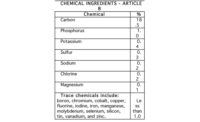It’s important to determine the potential heat exposure a worker faces doing a job or in a work environment to select FR clothing protection. The FR clothing industry has developed a heat energy rating system for FR fabrics to help identify the appropriate FR clothing to use.
Calculating exposure
The heat energy rating system requires employers to calculate the heat energy to which workers are exposed — measured in calories per square centimeter (cal/cm2).
Four factors affect how much heat a worker receives from an arc: 1) fault current; 2) arc length; 3) arc duration; and 4) distance from the arc. If any one of the first three factors changes by a certain amount in a certain direction (increases or decreases), a worker’s heat exposure changes by approximately the same ratio or percentage in the same direction (increase or decrease). If the arc duration is reduced by one-half, the amount of heat exposure is also reduced by approximately one-half: arc duration (or fault current or arc length) ÷ 2 ≈ heat exposure ÷ 2.
Distance from an arc and heat exposure is calculated differently. Heat exposure changes inversely (in the opposite direction) with the approximate square of the distance. This inverse relationship between heat exposure and distance can be expressed as:
Heat exposure ≈ 1
Distance2
For example, doubling a person’s distance from a potential arc, by using a longer live-line tool, results in a worker receiving approximately one-quarter of the original heat exposure. Tripling the distance would result in approximately a nine-fold decrease in heat exposure, etc. Use longer live-line tools and distance yourself from the hazard.2
Considerable guidance is available to calculate an arc’s heat energy, including Section 130.7(c) and Appendix D of NFPA 70E3, which provides a detailed sample calculation of a flash protection boundary (NFPA 70E, Standard for Electrical Safety in the Workplace, 2004 Edition, National Fire Protection Association). For other methods of estimating incident energy from an electric arc, see OSHA’s electric power generation, transmission, and distribution standards.
Fabric factors
Selecting FR clothing also calls for knowledge about fabrics. Clothing made from 100 percent cotton or wool may be effective in limiting injuries — if its weight is sufficient for flame and electric arc condition exposures. As heat levels increase, these materials will not melt, but they can ignite and continue to burn. The amount of heat required to ignite these materials depends on the weight, texture, weave, and color of the material, among other factors.
Lightweight cotton or wool (less than 11 ounces per square yard) that is not FR-treated may not provide adequate protection, unless the employer has determined the possible electric arc exposure is less than that posed by an 3800-ampere arc 12 inches (30.48 cm) long and 12 inches away from the employee and that last for 10 cycles, (1/6 of a second). Plus, the clothing worn must not ignite under potential electric arc and flame conditions.3
Synthetic materials such as acetate, nylon, polyester, or rayon, alone or in blends, are not FR, unless the employer demonstrates the fabric has been treated (made flame resistant or flame-retardant) to withstand exposures, or the clothing is worn in a manner that eliminates the hazard.



